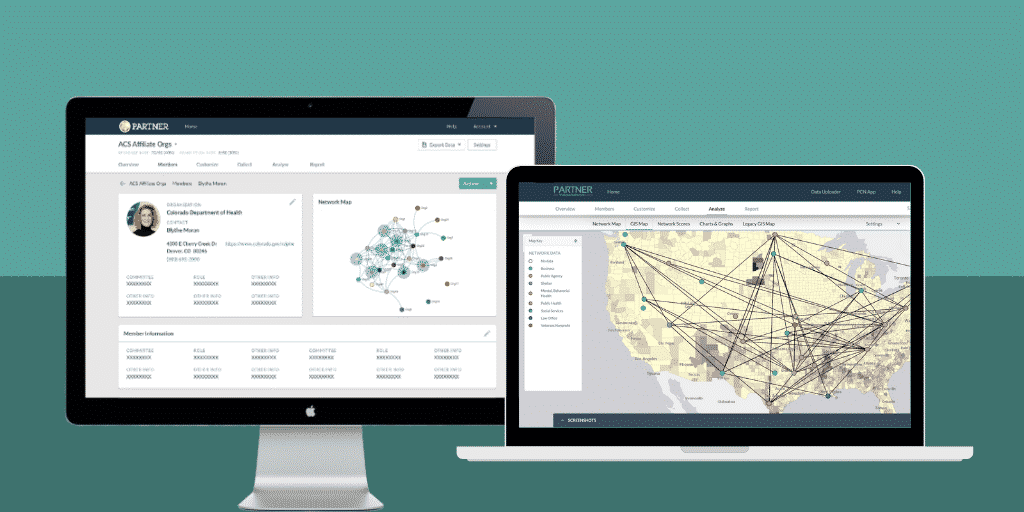Ecosystem Strategies Need CPRMs

The Era of the Ecosystem Strategy
This is the era of the ecosystem strategy (citation), the latest intervention to build an adaptive workforce, tackle wicked social problems, and solve the problem of insufficient resources when going it alone. For decades the nonprofit sector has called on cross-sector partnerships via grassroots movements. This was followed closely by public-private-partnerships touting the benefits of blending flexible business environments with government funding and needs. More recently, innovative private sector companies have adopted an adaptive approach to align the start-to-finish production of goods in the context of their supply environment and demand nuances, known as an Ecosystem Strategy.
Collaboration: the Ecosystem Navigator
Navigating an ecosystem is no easy journey. However, there is a dominant vehicle adopted by everyone using an ecosystem strategy today. Collaboration has become the approach to breaking down silos, exposing opportunity, and leveraging diverse ideas and resources. Collaboration is a way of working that attracts and involves people outside one’s formal control, organization, and expertise to accomplish common goals. The trend toward collaborative work is now so firmly established that organizations failing to prioritize the practice risk failing behind their competition in fast-paced ever-changing 21st century. What was once a primarily grass-roots strategy is now ever present among the largest corporations in the industry. The result is a more engaged workforce, greater productivity, and better customer experiences.
Connection is Such a Natural Tendency – So Why is Collaborating so Hard?
And yet, collaborating feels inefficient, risky, low value, and sometimes political. Too often, people will try to collaborate on everything, and wind up in endless meetings, debating ideas and struggling to find consensus. In one study, companies, organizations, and communities clearly see advantages in collaborating within the ecosystems, and almost half of those surveyed are actively seeking them. However, many companies aren’t seeing the revenue growth they had predicted from ecosystem participation. (citation)
We Cannot Leverage What We Cannot See
While it seems intuitive, collaboration is one of the most invisible activities we engage in. We are actually engaging in it a lot. It is almost impossible to implement a strategy when you cannot adequately collect data on its progress, metrics are ambiguous and hard to measure, and you cannot visualize the relationships between the members of an ecosystem. The lack of tangible evidence of “good collaboration” leads to ignorance about others’ expertise, redundancy, and mistrust in their ability to meet your expectations. Riding the collaboration vehicle through an ecosystem requires a roadmap to know who the “connectors” are (e.g. people who already bridge specialty domains), where organizational boundaries exist, and who the honest brokers are that can guide your way.
CPRM [Community Partner Relationship Management] Systems – the Next Ecosystem Roadmaps
A CPRM leverages the power of networks to solve complex systems problems. Equal parts strategy and technology, a CPRM is about using data to understand the interconnectedness of the ecosystem in which a company or community is working within to improve collaborative effectiveness and impact. A CPRM is a data technology platform for collecting, storing, analyzing, and mapping relationships among members of a network/ecosystem to inform strategy, leverage resources, increase effectiveness, and improve outcomes.
Data as the fuel for building strategies is not a new concept.
In fact, the primary tool for an organization’s relationship management approach is the well-known CRM [Customer Relationship Management] System. Today, some organizations are working hard to adapt their CRM’s to inform their ecosystem strategies. And many are finding it equivalent to the “square peg in a round whole” dilemma. This is not surprising. A CRM is a technology to managing a company’s interaction with current and potential customers to simplify the marketing and sales process, make call centers more efficient, and to provide better customer service. A CRM’s goal is to improve business relationships using data to understand your customers and boost sales.
CRMs don’t meet the needs of our partners, So we built something better.
Very little about the purpose of a CRM is a match for the needs of building interconnected relationships to achieve better outcomes. At Visible Network Labs, we worked with several large health care organizations as partners to adapt their existing CRMs to track their community partnerships to implement an ecosystem strategy. It was painful in every case. While the basic concept of logging in information about others worked, no system was able to take that concept to the next level to track the next layer of relationship.
Luckily, the tech world is responding to the inadequacies of a traditional CRM to meet the need of innovative complex ecosystem approaches. The launch of the CPRM is the solution for the next generation ecosystem strategy.
The CPRM Special Sauce: Network Science
Where a CRM falls short is its ability to take each “customer” in the system and track their relationships to one another and provide measures that can only be calculated when the dyadic relationships between all members of an ecosystems are aggregated to scale. Without that next level of interconnectedness, you cannot identify who is the most central in the ecosystem, you cannot measure density and centralization, you cannot easily identify gaps in who knows who, the quality of those relationships, and how those connections vary and change.
A CPRM turns your CRM from a rolodex into a dynamic ecosystem tracking machine.
Visible Network Labs is proud to be pioneering the first commercial CPRM on the market. PARTNER [Program to Analyze, Record, and Track Networks to Enhance Relationships] is the only CPRM on the market adopted widely throughout the public, private and nonprofit sectors.
We are in an era of extreme complexity, coupled with an increasing acknowledgement of the systems that are so interconnected that we can almost no longer consider any one of them in silo. Many of today’s most important challenges are so complex and multifaceted that they can only be tackled by teams of experts from disparate domains. To solve them, professionals must be able to harness ideas, people, and resources from across disciplinary and organizational boundaries. (citation)
About the Author: Dr. Danielle Varda
CEO, Founder, Professor, & Mother of Three Spirited Girls
Danielle is a scientist turned start-up founder, leading Visible Network Labs as CEO. Her combination of 20 years as a network scientist studying social connectedness and health, published author, 12 years as a tenured professor at the University of CO Denver, and her successful launch and scaling of the Center on Network Science came together in one big idea to start VNL. She is an entrepreneur, technologist, network scientist, fundraiser, and mother to three spirited girls. Her calling came when she realized her unique ability to develop technology solutions bridge complex systems science with everyday applications in communities, organizations, and business. She is a nationally known expert and keynote speaker on applied network science, with specific expertise in health system, public health system, entrepreneurial ecosystems, and educational system approaches. Danielle has published over 30 peer-reviewed articles on networks and their impact on health, well-being, and economic outcomes. Danielle leads VNL’s strategic partnership approach, is the company’s lead fundraiser, and has a vision for how to utilize network science to solve our most pressing and intractable problems.
In addition to her leading VNL, she is also an Associate Professor at the School of Public Affairs, University of Colorado Denver where she is Co-Director of the Center on Network Science, Director of the Nonprofit Concentration in the MPA program, and Advisor to the Dual MPA-MPH Degree. Additionally, she holds a secondary appointment in the Colorado School of Public Health, Department of Health Systems, Management, and Policy. She also has a courtesy Associate Professor appointment in the School of Information Sciences at the University of CO Boulder.







